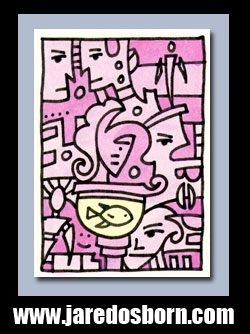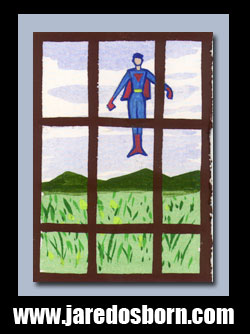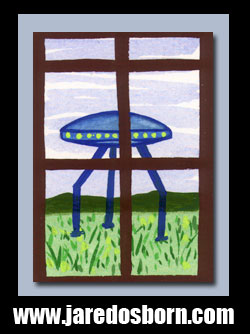
I’m bored with everything in life so I guess that means it’s time for another TV round-up. The new TV season is well under way and I’ve checked out some new shows as well as watched some old ones. Yeah, that’s everybody’s TV watching in a nutshell but sometimes it’s good to state the obvious. So what new shows have I checked out?
First there is “New Girl”. This show has grown on me a bit. At first I didn’t like it much. I mean, seriously, we were supposed to believe that Zooey Deschanel was such a weirdo that guys don’t like her? It was too distracting that the writers expected up to believe that. It made the whole show unfunny. But then, around the Thanksgiving episode, they acknowledged that Zooey is actually hot and guys would find her attractive no matter how quirky her character is. Things got funnier after that and the show is now okay. Not great but okay. That’s a start.
“2 Broke Girls” is the other sitcom I’ve checked out a handful of episodes of. It’s very sitcom-y. Poor girl and ex-rich girl live in hipster infested Williamsburg Brooklyn, work as waitresses, and teach each other lessons about life. There are plenty of wacky side characters too. Plus it’s loud. I don’t know if they’re shouting all the time, have the laugh track turned up, or it’s just me but everything on this show seems loud. I find that annoying sometimes. But overall the show is okay. They telegraph a lot of the jokes but it can also be funny. Though I do find myself laughing at how stupid it is sometimes. Much like “New Girl” it has reached a level of competency and now can either level off into mediocrity or get better and become good. We’ll see.
I’ve also watched “Terra Nova”. This one ended up going on my “Have on in the background” list. I like it but not enough to give my full attention to. I’ll put it on while I’m doing other things or want to have something on to distract me a little bit but not suck me in. The show is about people traveling back in time and living with dinosaurs. I find it a little nostalgic as it reminds me of family oriented sci-fi TV shows from the 70s and 80s. Most of those shows were awful but they were the only sci-fi stuff on TV. “Terra Nova” is semi-awful but somehow comforting. Every criticism you’ve heard about it is true but I still like to have it on as I draw.
I just started watching “Grimm” too. It’s a police procedural mixed with a monster of the week show. So far it’s okay. There is some sort of meta-story going on but so far they haven’t gone too much into it. I’m a bit tired of meta-stories so I’m glad we haven’t seen much of it yet. The show is just a few episodes old so it hasn’t had much time to distinguish itself so I’ll have to wait and see if it gets good or not.
And some of my returning favorites are:
”It’s Always Sunny in Philadelphia”- The gang is back and getting into all sorts of stupid situations. That sentence can be used to describe any season of the show but it’s true. This show is consistently crazy and funny and this season is no different. I always look forward to watching new episodes. Other shows aspire to be this funny.
”The Walking Dead” – I read the comic and I watch the TV show. I like the comic better but the show has been good. It’s not really about fighting zombies, like most zombie movies, but about survival in a post-apocalyptic world. Zombies are sudden death but it’s the surviving humans who are as much a problem as anything. A solid show.
“The Big Bang Theory” – Another funny season. I’ve liked all the female cast members they’ve added over the years and now there is quite an ensemble of comic players to have stories about. Nothing earth-shattering but a good, dependable, funny sitcom.
“How I Met Your Mother” – Another solid sitcom where the real stars are the supporting cast. The lead character is the least interesting one in the bunch but he still does a decent job. Neil Patrick Harris steals the show as he has since the beginning but the other supporting players are also funny. Once again, a sitcom where I kind of know what to expect but those expectations involve some laughs.
“Burn Notice” – This show seems to destroy itself at the end of every season and then rebuild itself at the beginning the next season. I like the show episode to episode but I’ve almost lost track of what the meta-story is. I thought the lead character finally got back at the guys who burned him but there always seems to be some organization behind the organization he defeats. I still enjoy the show even if I’ve lost track of who the mysterious bad guys are.
“Castle”, “Bones”, and “The Mentalist” I’d describe about the same way. They continue to be breezy, entertaining, fun, police procedurals. You get some comedy, drama, and character development all while solving a murder case. I think I’ve grown a little less interested in “Bones” but I have no explanation for why. All three are pleasant diversions.
“Community” – Continues to be one of the most imaginative comedies on TV. It puts it’s diverse cast into all sorts of weird situations and references all sorts of pop culture stuff in funny and creative ways. It doesn’t think just mentioning something about Star Wars is a joke about Star Wars like so many other shows. This and ”It’s Always Sunny in Philadelphia” are my two go-to comedies that I look forward to each week.
“Dexter” – A consistently good show but I think I liked last season better. Of course the reason I liked last season better was because Julia Stiles was in it and she’s easy on the eyes. That’s no real reason for one season being better than another so you might like this one better than that one. Either way “Dexter” continues to be good and I’ll continue to watch it.
“Fringe” and “Supernatural” both continue to be good. “Fringe” managed to reinvent its parallel world storyline this season in an interesting way and I’m continually impressed at how “Supernatural” manages to come up with new and different world threatening meta-stories after they’ve saved the world time after time. Both also do the “Monster of the Week” thing well with “Fringe” being the more sci-fi brain powered show while “Supernatural” depends more on ass-kicking.
“The Office” has been a bit of a disappointment. I think it lost its footing last season and had never really regained it. It’s not terrible or anything but I think the characters are less defined and less funny. I’ve still been watching it but I don’t look forward to it as I used to.
And by the way I never watch live TV anymore. Everything is recorded and time-shifted. I’m one of the people advertisers hate and the feeling is mutual. So what have you been watching?




